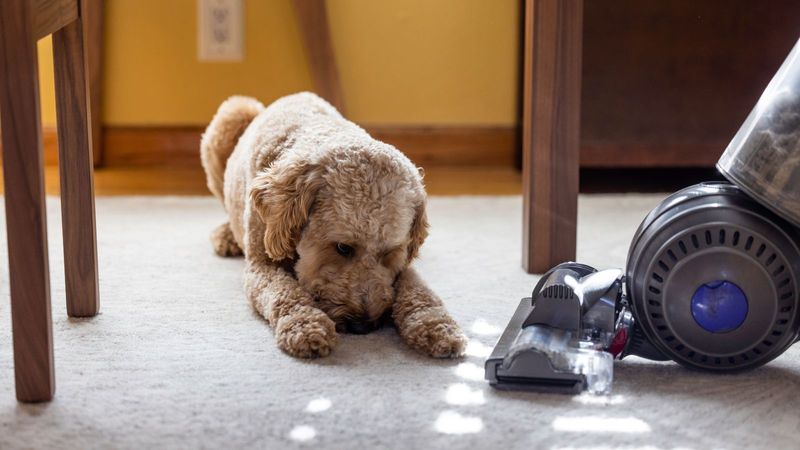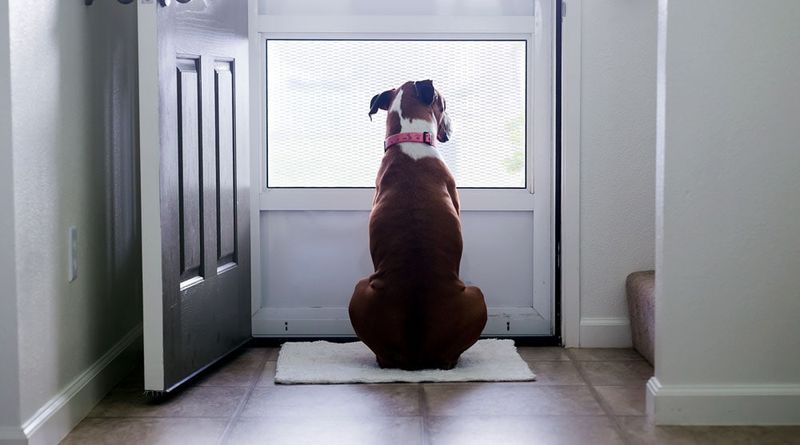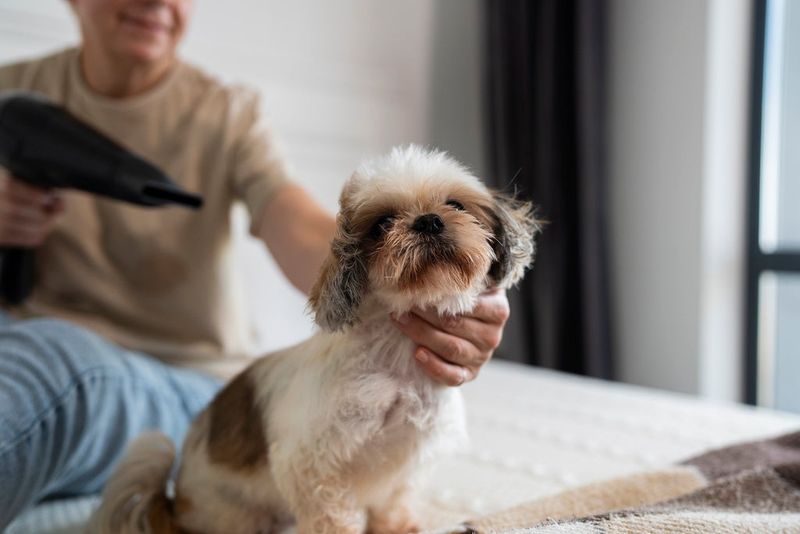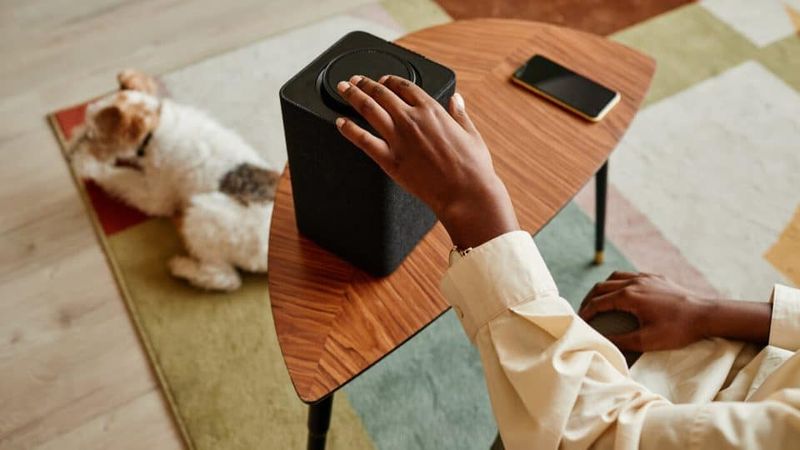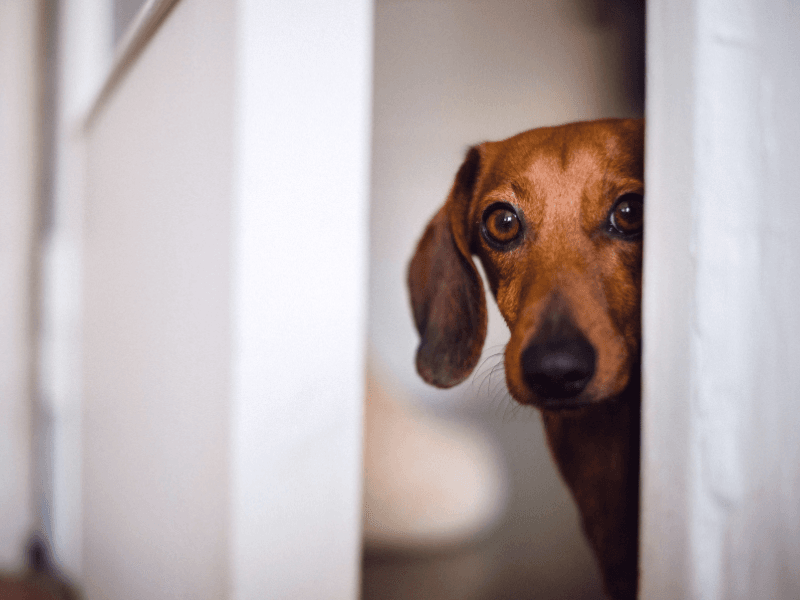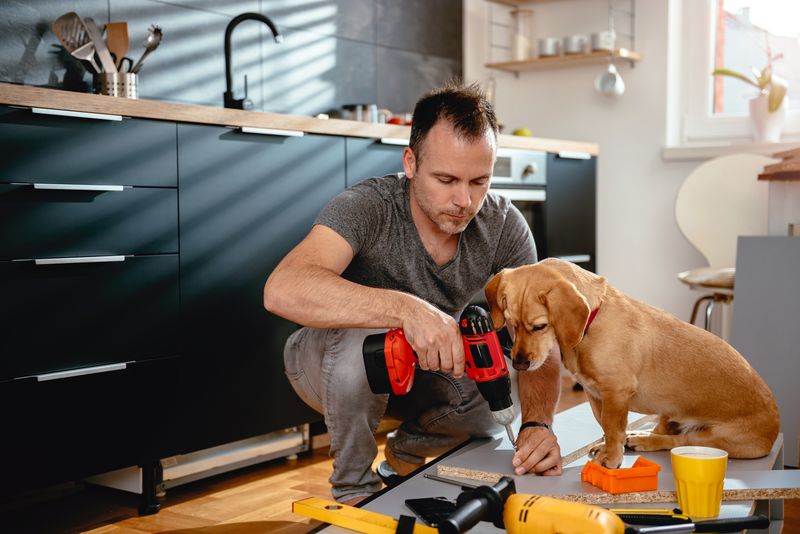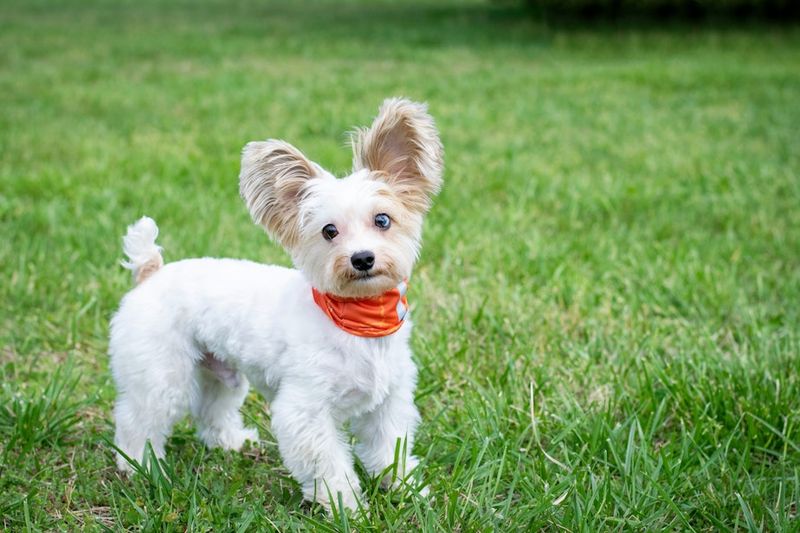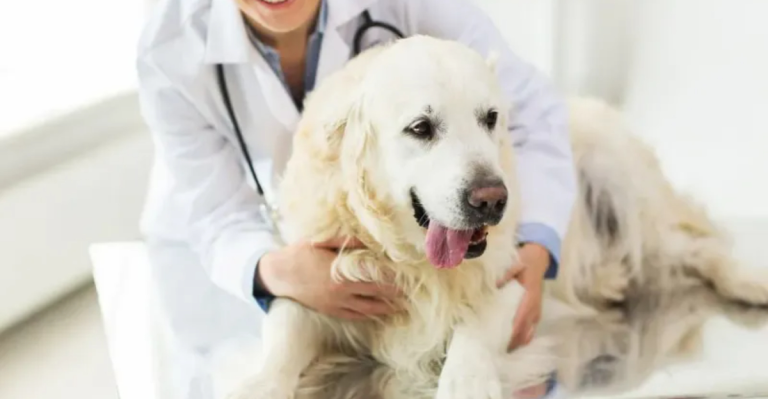11 Everyday Noises That Are Secretly Stressing Out Your Dog
Dogs experience the world primarily through their ears, with hearing capabilities far more sensitive than ours. Many common household sounds that barely register to us can actually trigger stress, anxiety, or fear in our canine companions.
Understanding which everyday noises might be troubling your four-legged friend is the first step toward creating a more peaceful environment for them.
1. Vacuum Cleaners: The Roaring Monster
Your trusty vacuum cleaner might be keeping your floors spotless, but it’s likely sending your dog into a panic. The combination of high-pitched motor noise and strange movement makes vacuums particularly threatening to dogs.
Many pups interpret this loud, moving object as a danger, triggering their fight-or-flight response. The sudden noise changes when the vacuum runs over different floor surfaces only adds to their confusion.
Try desensitizing your dog gradually by letting them observe the vacuum when it’s off, offering treats nearby, and eventually running it briefly in another room before slowly decreasing the distance.
2. Doorbell Dread
That cheerful ding-dong announcing visitors sends many dogs into a barking frenzy. Your dog’s reaction isn’t just about excitement—it often stems from genuine anxiety about who might be entering their territory.
The sudden, sharp sound of doorbells can startle even the calmest dogs. This noise has become a conditioned trigger that something unpredictable is about to happen in their safe space. Help your pup by practicing doorbell desensitization.
Ring the bell at low volumes while giving treats, gradually increasing volume as they become more comfortable. Some pet parents even switch to silent doorbells to reduce stress.
3. Thunderstorm Terrors
Many dogs develop intense fear responses to thunderstorms, often sensing changes in barometric pressure even before the first rumble. The unpredictable timing and volume of thunder makes it especially frightening.
Dogs experiencing storm anxiety might pant heavily, pace, hide, or become unusually clingy. Some even develop the ability to predict storms before humans notice any signs, showing early stress behaviors.
Create a safe space where your dog can retreat during storms—perhaps a bathroom, closet, or crate covered with a sound-dampening blanket. Background noise from a fan, TV, or specially designed calming music can help mask the thunder’s intensity.
4. Fireworks Freak-outs
The unpredictable booms, whistles, and crackles of fireworks create one of the most stressful experiences for many dogs. Unlike thunderstorms, which at least follow natural patterns, fireworks seem random and threatening to canine ears.
During fireworks displays, a dog’s acute hearing picks up frequencies we can’t detect, amplifying their fear. The strange smells of gunpowder and sulfur compounds their confusion about this invisible threat.
Prepare for known fireworks events by exercising your dog earlier in the day and creating a quiet, secure space at home. Consider sound-masking techniques, anxiety wraps, or speaking with your vet about temporary anti-anxiety medications for severe cases.
5. Smoke Alarm Shrillness
Smoke alarms are deliberately designed to be unbearable to human ears—imagine how they sound to your dog, whose hearing is four times more sensitive! The piercing, high-pitched beep triggers immediate panic in most dogs.
Even the low-battery chirp that merely annoys humans can cause prolonged anxiety for dogs. They cannot understand the source or purpose of this sound, only that it hurts their ears and seems to come from nowhere.
When testing smoke alarms, consider putting your dog in another room or outside with a family member. For unavoidable alarms, create a sound refuge with familiar comforts and reward calm behavior during and after exposure.
6. Beeping Appliance Anxiety
The seemingly innocent beeps from your microwave, dishwasher, or washing machine can trigger surprising stress in sensitive dogs. These electronic alerts operate at frequencies particularly noticeable to canine ears, often causing them to startle or become vigilant.
Dogs can’t understand why these random, sharp sounds occur, creating unpredictability that leads to anxiety. Some pups learn to associate specific beeps with certain events, like you leaving the house after setting the security system.
Consider muting unnecessary appliance sounds when possible or maintaining consistent routines around unavoidable beeps.
Creating positive associations by offering treats during common beeping times can help reshape your dog’s emotional response.
7. Hair Dryer and Blender Hysteria
The high-pitched whine of hair dryers and the aggressive grinding of blenders represent some of the most jarring sounds in your home. These appliances create a perfect storm of sensory overload—combining unusual noises with strange movements and air currents.
Many dogs interpret these sounds as threats, triggering their instinctive fear response. The unpredictable nature of when these appliances start and stop only compounds their anxiety.
Try gradual exposure therapy by running these appliances at a distance while your dog enjoys high-value treats. Alternatively, establish a comfortable safe zone in another room where your pup can retreat when these inevitable household sounds occur.
8. Television and Music Volume Spikes
Your entertainment systems produce complex soundscapes that can overwhelm your dog’s sensitive hearing. Sudden volume changes during commercials, action sequences, or when switching between music tracks are particularly startling.
Dogs often can’t distinguish between real sounds and those coming from speakers. A barking dog on TV might seem like an intruder, while dramatic movie soundtracks with rumbling bass can mimic threatening natural phenomena.
Keep remote controls handy to quickly adjust volume during loud segments. Consider using volume-leveling features available on many modern entertainment systems, which automatically balance sound levels to prevent jarring transitions that might stress your furry friend.
9. Door Slam Distress
The sudden bang of a slamming door sends shockwaves of sound that can trigger immediate alarm in dogs. This abrupt noise activates their startle reflex, causing a rush of stress hormones even in otherwise confident canines.
Repeated door slams throughout the day create an unpredictable environment that prevents dogs from fully relaxing. Some may develop negative associations with specific doors, becoming anxious whenever anyone approaches them.
Install door stoppers, cushioning pads, or slow-close hinges to minimize slamming sounds. Teaching family members to close doors gently and rewarding your dog for maintaining calm behavior during normal door operations can gradually reduce their sensitivity.
10. Construction Cacophony
Hammering, drilling, and sawing create an unpredictable symphony of stress for many dogs. Home renovations or nearby construction projects introduce unfamiliar, threatening sounds that disrupt your dog’s sense of security in their territory.
The irregular rhythm and variable volume of construction noises make them particularly difficult for dogs to habituate to. Unlike predictable sounds like traffic, construction creates constant novelty that keeps triggering fresh stress responses.
For planned home projects, consider arranging a playdate or doggy daycare visit. During unavoidable construction periods, create a quiet retreat in the most sound-insulated room of your home, complete with familiar bedding, toys, and perhaps a white noise machine.
11. Key Jingling Jitters
The metallic tinkling of keys or jangling of collar tags might seem innocuous to us, but many dogs have developed strong associations with these distinctive sounds. For some, keys signal potential abandonment as owners prepare to leave, triggering separation anxiety.
Dogs quickly learn to recognize the specific pattern of their owner’s key ring or the unique jingle of another pet’s collar tags. These sounds become powerful emotional triggers that can instantly change your dog’s mood and behavior.
If your dog shows stress around key sounds, try desensitizing by jingling keys randomly throughout the day without leaving. Consider fabric key covers or rubber silencers for pet tags if these sounds consistently trigger anxiety in your furry companion.

